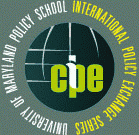Cash Transfers and Guaranteed Minimum Income Programs:
Research, Evaluation, and Policy
Prague, Czech Republic
September 9-10, 2024

-
“Double Versus Single Threshold Eligibility Designs in Minimum Income Schemes”
Dmitry Petrov, University of Alcalá
The use of income or wealth thresholds is crucial in designing means-tested benefits. Policymakers rely on these thresholds to target benefits towards individuals or families facing economic hardship while ensuring the efficient allocation of scarce resources. One major challenge is deciding which income or assets to consider and whether to incorporate solely an income threshold or a joint income and wealth threshold, which significantly influences the effectiveness of benefits reaching the intended target groups.
Most means-tested benefits include an income threshold since income is the best indicator of households' economic well-being, representing the monetary flow of resources available to them. However, some individuals classified as poor based on income possess significant assets. Recent analyses have shown that assets are vital for households' well-being as they represent a permanent component that can be converted into resources to face unexpected shocks or for long-term investments, such as using assets as collateral for a mortgage. This explains why many minimum income protection (MIP) schemes in Europe include asset tests as eligibility criteria, although there is limited knowledge about their impact on potential claimants or the characteristics of the population excluded by these tests.
Including a joint income and wealth threshold facilitates a more effective allocation of resources to households most in need. However, this also carries risks, such as potentially excluding vulnerable households. There is no clear benchmark for determining an individual's vulnerability in wealth, unlike the income threshold, which can be based on the poverty line. Additionally, the definition of wealth in the asset test (gross or net wealth) plays a crucial role in identifying who is vulnerable.
Effective empirical strategies are needed to identify which households are excluded by the wealth threshold and what type of assets render them ineligible for MIP. If we can differentiate between those excluded and determine whether they are vulnerable, the threshold should be adjusted accordingly.
The Spanish government introduced a new national minimum income scheme, Ingreso Mínimo Vital (IMV), in May 2020 to address the heterogeneity in adequacy and coverage rates of regional schemes and to cope with the COVID-19 pandemic. To be eligible for this benefit, households must meet both income and wealth thresholds. This design raises the need to assess the impact of a double threshold on household well-being compared to benefits based only on an income threshold. Spain has one of the highest income poverty rates in Europe, but its net wealth is well-distributed due to widespread homeownership, leading to a low percentage of individuals who are both income and wealth poor.
This paper has two main aims. First, it provides a detailed analysis of the role of a double threshold versus a simple income threshold in identifying potential benefit claimants. To do this, we employ a microsimulation model designed with the new administrative data, allowing us to examine potential claimants under the current IMV design with both income and wealth thresholds. We compare this scenario with potential claimants in an alternative setting where only a single income threshold is considered.
Second, it offers an in-depth descriptive analysis of households excluded by the asset test (while meeting income requirements), focusing on their wealth composition and position in the wealth distribution compared to the overall population. Key characteristics such as gender, age, household type, nationality, and region of residence are identified and analyzed to understand their influence on the probability of being excluded by the asset test.
This paper contributes to the literature by enhancing the understanding of the take-up problem with a double threshold of income and wealth. Using novel administrative data from the Spanish MIP context, it overcomes traditional limitations of microsimulation analysis using survey data. Furthermore, analyzing the wealth composition and socioeconomic status of households excluded by asset tests allows for a discussion on the stringency of the wealth threshold in the IMV and offers alternative policy designs. This provides a comprehensive analysis of the implications of including a wealth threshold in the new minimum income scheme in Spain, which can extend to other public policy evaluations incorporating a wealth threshold.

